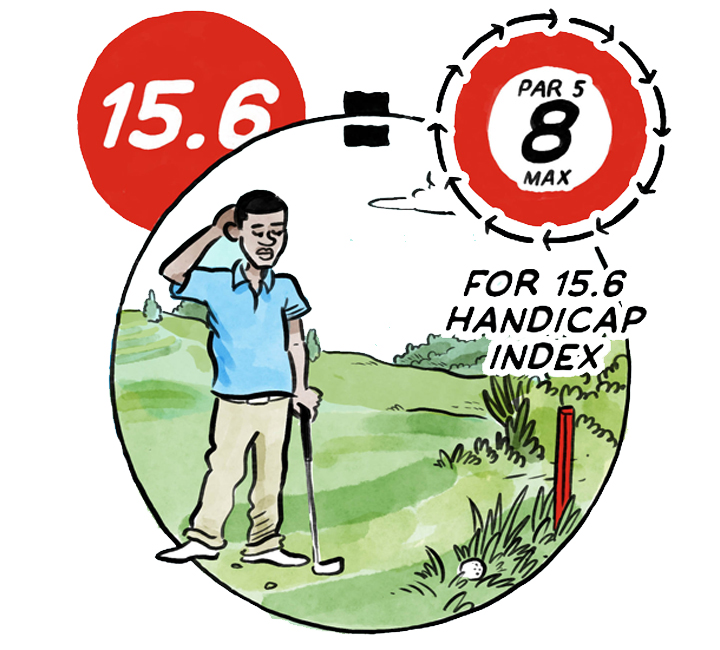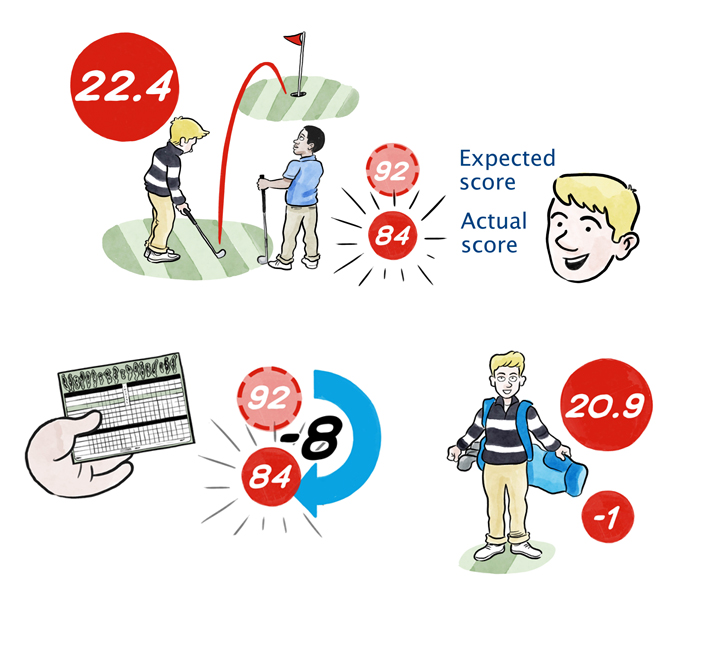Exceptional Score Reduction
The new rule of Exceptional Score Reduction (ESR) replaces the current USGA Handicap System’s Section 10-3, which allowed a player’s Handicap Index to be reduced based on two low tournament score differentials over the previous 12 months. Below is a breakdown of the change:
- New: When a player submits a score differential of at least 7.0 strokes lower below their Handicap Index, they will be subject to an ESR adjustment. The adjustment ranges from -1 if the score differential is 7.0-9.9 strokes below the current Handicap Index, or -2 if the score differential is 10.0 strokes below the current handicap index.
- Old: Section 10-3 in the USGA Handicap System said that if a player submitted two T-scores within a 12-month period that were at least 3.0 strokes better than the Handicap Index, that player would be eligible for an automatic reduction, which was signified by the “R” next to the Handicap Index at each revision date.
- Effect: This makes for a much simpler reduction process, and one that is much more in line with how the golfer is playing on a given date. In the USGA system, golfers would often begin to play worse yet be reduced due to those tournament rounds still being considered for up to one year. But in WHS, the adjustment is possible with every score posting, so if it were to occur, it is much more straightforward and intuitive. Additionally, all scores posted by a golfer are eligible for ESR, whereas in the current system just T-scores were considered as a part of the formula for adjustment.
Key Changes in the World Handicap System
Click on an Item Below for a Full Description

Handicap Index Computation

Course and Playing Handicap

Playing Conditions Calculation

